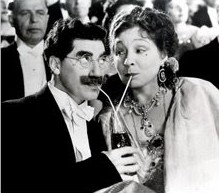In an attempt to wring absolutely all the magic from romantic crushes, John Allen Paulos of the New York Times looks at the science and statistics behind human desire. We’ve been doing it all wrong! An excerpt:
“Let’s begin by imagining a person to be an assemblage of traits. Many are personal — our looks, habits, backgrounds, attitudes and so on. Many more are situational: how we behave in the myriad contexts in which we find ourselves.
The first relevant statistical notion is sampling bias. If we want to gauge public feelings about more stringent gun control, for instance, we won’t get a random sample by asking only people at a shooting range. Likewise, a fleeting glimpse of someone, or a brief exchange with him or her, yields just a tiny sample of that person’s traits.
But if we find that sample appealing, it can lead to a crush, even if it is based on nothing more than an idealized caricature: We see what we want to see. In the throes of incipient romantic fog, we use what the psychologist Daniel Kahneman, in his book Thinking, Fast and Slow, calls System 1 thinking — ‘fast, automatic, frequent, emotional, stereotypic and subconscious.'”
Tags: Daniel Kahneman, John Allen Paulos

